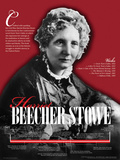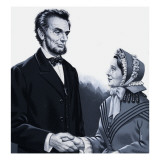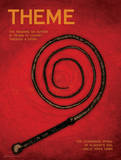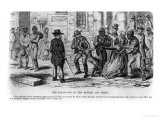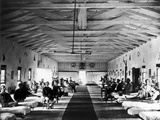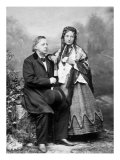|
|
|||||||||
|
|||||||||
|
|
|||||||||
|
An Old Favorite! |
|||||||||
|
|
|||||||||
 |
|||||||||
|
|
|||||||||
Harriet Beecher Stowe Posters, Books, Video, Links for Learning
|
|||||||||||||||||||||||||||||||||||||||||||||||||||||||||||||||||||||||||
|
literature > HARRIET BEECHER STOWE < famous women < social studies |
|||||||||||||||||||||||||||||||||||||||||||||||||||||||||||||||||||||||||
|
|||||||||||||||||||||||||||||||||||||||||||||||||||||||||||||||||||||||||
HARRIET BEECHER STOWE QUOTES: • “I did not write it. God wrote it. I merely did his dictation.” Introduction to Uncle Tom's Cabin, 1879 • HARRIET BEECHER STOWE BOOKS, VIDEO Uncle Tom's Cabin by Harriet Beecher Stowe- one of the most influential novels in American history, Uncle Tom's Cabin published as a book in 1852, fanned the struggle between free states and slave states into the fire of the Civil War-and is as powerful and relevant today as when it was first published more than a century and a half ago. Autobiography of Josiah Henson: An Inspiration for Harriet Beecher Stowe's Uncle Tom by Josiah Henson- Dred: A Tale of the Great Dismal Swamp (Penguin Classics) by Harriet Beecher Stowe, Robert S. Levine (Editor)- Written partly in response to the criticisms of Uncle Tom's Cabin by both white Southerners and black abolitionists, Dred (1856) extends the plantation novel to examine, in the words of the author, “the views and reasonings of those who have bowed down to the yoke, and felt the iron enter their souls.” Through the compelling stories of Nina Gordon, the mistress of a slave plantation, and Dred, a black revolutionary, Stowe brings to life conflicting beliefs about race, the institution of slavery, and the need for the radical action that erupted during the 1850s. Exploring the political and spiritual goals that fuel Dred's rebellion, she creates a figure far different from the acquiescent Christian martyr, Uncle Tom. (Great Dismal Swamp) The Minister's Wooing by Harriet Beecher Stowe- a domestic comedy is a powerful examination of slavery, Protestant theology, and gender differences in early America. The First Christmas of New England by Harriet Beecher Stowe- Mrs. Stowe, the most popular woman author writing in America during the 19th century, wrote this classic story of America’s first Christmas and published it in a collection of other stories. It is a Christmas story set in Massachusetts at the time of the pilgrims by the well-known author of Uncle Tom’s Cabin. Never before published by itself, this essay deserves to stand with other important and memorable classic Christmas stories, evoking the joy and meaning of Christmas in America. “Let us look into the magic mirror of the past and see this harbor of Cape Cod on the morning of the 11th of November, in the year of our Lord 1620, as described to us in the simple words of the pilgrims.” Palmetto Leaves by Harriet Beecher Stowe- In 1867, the author of Uncle Tom's Cabin settled in a small cottage in Mandarin, Florida, overlooking th St. Johns River, She had promised her Boston publisher another novel but was taken with the northeast Florida that she produced instead a series of literary sketches of the land oand the people which she submitted in 1872 under the title Palmetto Leaves. The American Woman's Home by Catherine E. Beecher and Harriet Beecher Stowe- originally published in 1869, was one of the late nineteenth century's most important handbooks of domestic advice. The result of a collaboration by two of the era's most important writers, this book represents their attempt to direct women's acquisition and use of a dizzying variety of new household consumer goods available in the post-Civil War economic boom. It updates Catharine Beecher's influential Treatise on Domestic Economy (1841) and incorporates domestic writings by Harriet Beecher Stowe first published in The Atlantic in the 1860s. Today, the book can be likened to an anthology of household hints, with articles on cooking, decorating, housekeeping, child-rearing, hygiene, gardening, etiquette, and home amusements. The American Woman's Home, almost a bible on domestic topics for Victorian women, illuminates women's roles a century and a half ago and can be used for comparison with modern theories on the role of women in the home and in society. [FYI - The American Woman's Home gave their stamp of approval to the prints of Currier and Ives.] The Oxford Harriet Beecher Stowe Reader by Harrie Beecher Stowe, et al- Harriet Beecher Stowe: A Life by Joan D. Hedrick- “Up to this year I have always felt that I had no particular call to meddle with this subject....But I feel now that the time is come when even a woman or a child who can speak a word for freedom and humanity is bound to speak.” Thus did Harriet Beecher Stowe announce her decision to begin work on what would become one of the most influential novels ever written. The subject she had hesitated to “meddle with” was slavery, and the novel, of course, was Uncle Tom's Cabin. Still debated today for its portrayal of African Americans and its unresolved place in the literary canon, Stowe's best-known work was first published in weekly installments from June 5, 1851 to April 1, 1852. It caused such a stir in both the North and South, and even in Great Britain, that when Stowe met President Lincoln in 1862 he is said to have greeted her with the words, “So you are the little woman who wrote the book that created this great war!” In this landmark book, the first full-scale biography of Harriet Beecher Stowe in over fifty years, Joan D. Hedrick tells the absorbing story of this gifted, complex, and contradictory woman. Hedrick takes readers into the multilayered world of nineteenth century morals and mores, exploring the influence of then-popular ideas of "true womanhood" on Stowe's upbringing as a member of the outspoken Beecher clan, and her eventful life as a writer and shaper of public opinion who was also a mother of seven. It offers a lively record of the flourishing parlor societies that launched and sustained Stowe throughout the 44 years of her career, and the harsh physical realities that governed so many women's lives. The epidemics, high infant mortality, and often disastrous medical practices of the day are portrayed in moving detail, against the backdrop of western expansion, and the great social upheaval accompanying the abolitionist movement and the entry of women into public life. The Beecher Sisters by Barbara A. White- The Beecher sisters - Catharine, Harriet, and Isabella -were three of the most prominent women in nineteenth-century America. Daughters of the famous evangelist Lyman Beecher, they could not follow their father and seven brothers into the ministry. Nonetheless, they carved out pathbreaking careers for themselves. Catharine Beecher founded the Hartford Female Seminary and devoted her life to improving women's education. Harriet Beecher Stowe became world famous as the author of Uncle Tom's Cabin. Isabella Beecher Hooker was an outspoken advocate for women's rights. This engrossing book is a joint biography of the sisters, whose lives spanned the full course of the nineteenth century. The life of Isabella Beecher - who has never been the subject of a biography - is examined in particular detail here. Drawing on little used sources, Barbara White explores Isabella's political development and her interactions with her sisters and with prominent people of the time-from Susan B. Anthony and Elizabeth Cady Stanton to Mark Twain. Harriet Beecher Stowe and the Beecher Preachers by Jean Fritz- Harriet Beecher Stowe grew up in a family in which her seven brothers were expected to be successful preachers and the four girls were never to speak in public. But slavery made Harriet so angry she couldn't keep quiet. Although she used a pen rather than her voice to convince people of the evils of slavery, she became more famous than any of her brothers. She firmly believed that words could make change, and by writing Uncle Tom's Cabin, Harriet Beecher Stowe hastened the Civil War and changed the course of America history. Grade 5-9 A Picture Book of Harriet Beecher Stowe (Picture Book Biography) by David A. Adler, Colin Bootman (Illustrator) - offers easily accessible information supported by realistic illustration. Begins with Stowe's early life, her love for reading and on to her family's move from Connecticut to Cincinnati in 1832 where she witnessed the horrors of slavery, which left a deep impression. Grade 2-4- Slave Songs of the United States- The Classic 1867 Anthology by Wm Francis Allen - this landmark book represented the first systematic effort ot collect and preserve the songs sung by the plantation slaves of the Old South. To ensure authenticity, the editors notated most of the melodies and words directly from the singers themselves. The result was a rare musical tresusry containg complete music and lyrics for over 130 songs, arranged by geographical region. LINKS FOR LEARNING : HARRIET BEECHER STOWE
|
|||||||||||||||||||||||||||||||||||||||||||||||||||||||||||||||||||||||||
|
previous page | top |
|
|
|
NPW home | Global PathMarker Collection | APWTW Blog | faqs-about | contact | search | privacy |
|
NetPosterWorks.com ©2007-2015 The Creative Process, LLC All Rights Reserved. |
last updated







